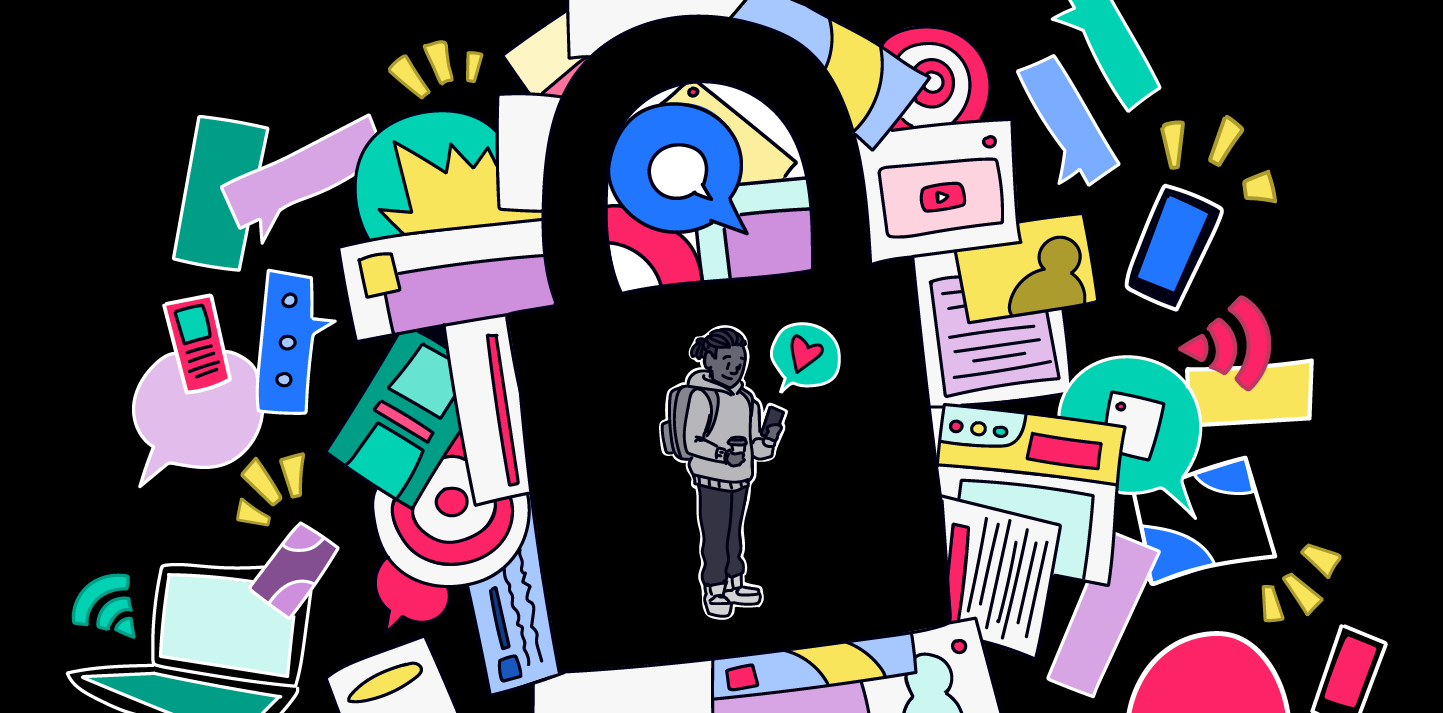The world of digital advertising is constantly changing and evolving year after year, and 2023 will be no exception. With many predictions and promises involving targeting, tracking, and privacy likely coming to fruition this year, DH is keeping a close eye on the digital landscape. These are the key trends for digital marketers we see coming into play in 2023:
Continued Investment in Digital Buying
2022 saw a 15% increase in digital ad spend, with digital advertising dollars accounting for 71% of all advertising spend. We predict this number to continue to rise with similar increases year over year as brands continue to invest in digital as a way to effectively reach their target audiences. Building a strong, recognizable digital presence is becoming more important every year as the world’s internet usage continues to grow, with users spending an average of 494 minutes online per day in 2022 (an 11 minute increase from 2021). That number is expected to pass an average of 500 minutes in 2023.
In terms of digital platforms, 2022’s top performers are Meta, TikTok, and CTV. However, Meta’s ad spend decreased in 2022 due to Meta’s decreased targeting capabilities and we expect that trend to continue into 2023. Due to TikTok’s increasing targeting capabilities and overall ad experience, and CTV’s increasing user numbers as more people transition toward streaming platforms and their influx of quality content, we expect these platforms to continue their popularity throughout the new year.

This year, brands should continue to turn their focus toward investing in digital tactics to reach their audiences on platforms they frequent.
Full Transition to GA4
In 2022, Google announced Universal Analytics will no longer track data on July 1, 2023. This year we know brands will turn their focus to prepare for that transition, if they haven’t already.
Google Analytics 4 has a lot of benefits – the platform is more user and event centered, reporting is more streamlined, it offers new ways to track users and engagement, and is more compliant with privacy regulations. However, brands and agencies will need to prepare to experience a change in their web tracking and reporting experience.
One of the biggest adjustments we are anticipating is brands needing to come up with a solution for year over year reporting. GA4 properties do not account for UA historic data and, eventually, UA data will not be able to be accessed in Google Analytics (that date has yet to be announced). To prepare for this transition, brands and agencies will need to turn their focus to how they will internally switch over to GA4 as well as how to export and store past UA data.

This year, it will be vital for brands to familiarize themselves with the GA4 changes, transition to new properties, and develop an internal strategy for maximizing events and exporting/storing historical UA data.
Focus on Privacy and Transparency
A trend we have seen on the rise over the past few years, a bigger focus on privacy and transparency is going to come to the forefront of digital advertising. We have already seen this begin to happen with Meta and Google, and expect other platforms to follow. Advertisers should expect changes in ad platforms and targeting capabilities over the next few years and be prepared to stay flexible with their digital strategy as needed. These types of changes tend to happen quickly with little to no warning.
Another major privacy change is, of course, the 3rd party cookie going away. This transition was once again pushed out by Google to 2024, but we are beginning to see what kind of effect it will have with Apple’s app tracking change, asking users to opt-in to app tracking on their devices (and many users opting out). 3rd party cookies impact retargeting, behavioral targeting, and conversion targeting. Their absence will require advertisers to collect and store their own data or rely on 1st party targeting, such as contextual targeting.

This year, brands should continue to pay close attention to changes happening on individual platforms and begin to prepare on how they will internally handle the depreciation of 3rd party cookies in 2024.
Content: Keep it Short and User Generated
1/3rd of digital advertising spend went to video in 2022, and we expect that percentage to increase in 2023. Additionally, shorter videos are becoming increasingly popular. Users today are more likely to pay attention to and fully watch 10-15 second videos. We are seeing brands shift more of their creative resources to create short, attention-grabbing videos in 2023.
User Generated Content is by no means a new concept, and most advertisers are aware of UGC, as it gives brands a community, builds their online personality, and typically sees higher engagement. But with platforms like Instagram and TikTok increasing the popularity of influencers and content creators, we expect to see more brand-influencer partnerships in 2023. These platforms have also been helpful in creating the micro-influencer, making partnerships possible for smaller, more local brands.
Brands that choose not to partner with influencers due to budget or other concerns, may choose to use UGC from anyone in their target audience as content for their digital marketing strategy. This requires brands to keep a close eye on what is being shared about them/what they are tagged in, but can be a more affordable, more controlled alternative to an influencer partnership using real members of the target audience to communicate a brand’s value within a community, and we anticipate to see more of this kind of UGC in the coming year.

This year, brands should turn their focus to investing in short videos and UGC to promote on their digital platforms.
Our current digital landscape is going through a period of serious transition, one we believe will continue for the foreseeable future. While this is often a pain point for many digital marketers, it is important to remember that hopefully these changes slowly push us toward a more inclusive, safer digital environment and provide meaningful opportunities for digital marketers to genuinely connect with their target audiences.
We're here to help
If you need help working through communications strategy, media engagement or audience engagement during this time, give us a call. We’re happy to talk strategy and help.

